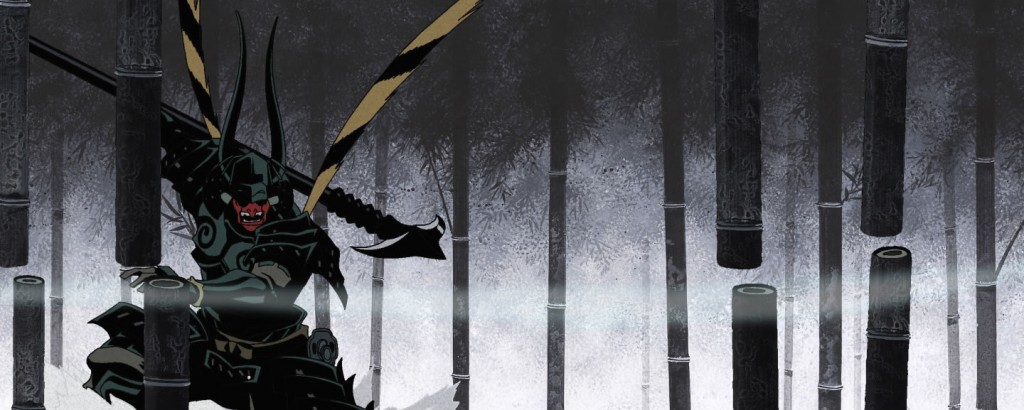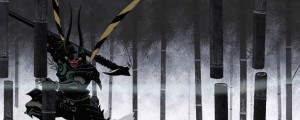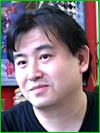
 Archival interview with Yutaka Minowa from the official Matrix website.
Archival interview with Yutaka Minowa from the official Matrix website.
MATRIX: How did you get started in anime work?
MINOWA-SAN: When I finished high school I went to a design school for two years, and from there started at a very small animation company doing work as an animator. Since then, for about 10 years, I’ve been on loan to Madhouse [Production and Design Studio for WORLD RECORD and PROGRAM]. I’ve worked with Kawajiri-san as character designer and animation supervisor on Ninja Scroll and Vampire Hunter D, and now I’m working on the new Ninja Scroll film Kawajiri-san is doing.
MATRIX: Wasn’t there a Vampire Hunter D film made years ago?
MINOWA-SAN: Vampire Hunter D comes from a very popular series of novels — there are around 20 or 30 books. About 15 years ago, a feature film was made based on one of the books, and Vampire Hunter D: Bloodlust is Kawajiri-san’s adaptation of yet another story from that series of 20 books.
 MATRIX: Can you talk about your work on the new Ninja Scroll; and is it a remake or a sequel?
MATRIX: Can you talk about your work on the new Ninja Scroll; and is it a remake or a sequel?
MINOWA-SAN: It’s a sequel. I can’t really talk about the movie itself, but I’ve been involved since the beginning of the project, so I’m doing the key artwork, the concept art and I’ll be supervising the animation as well.
MATRIX: What was your initial reaction to seeing THE MATRIX?
MINOWA-SAN: To be completely honest, when I saw THE MATRIX the first thing I thought was, how is animation going to surpass this level of visuals and action? From a purely professional point of view, I’m a little worried about how animation is going to continue to attract audiences, given that level of filmmaking. I’ve never wanted to make movies just for anime fans, they should be accessible to all audiences. How the animation industry meets the challenge of making movies in a climate after THE MATRIX is a real concern.
MATRIX: How did your working relationship with Kawajiri-san evolve?
MINOWA-SAN: I’ve got a pretty relaxed working relationship with Kawajiri-san now, but when I first started working with him, he was already a pretty famous director, so I was a little concerned that I’d actually be able to make a contribution to Kawajiri-san’s films. But Kawajiri-san has always been very honest and very frank with me, so that’s made having a good working relationship very easy.
MATRIX: Describe your working process on THE ANIMATRIX.
MINOWA-SAN: Originally I wasn’t going to be involved in THE ANIMATRIX, but as Kawajiri-san was headed to the United States with the script, he asked me to do a few character drawings to include in the presentation materials for PROGRAM. So I started out doing basic concept work based on Kawajiri-san’s designs. Kawajiri-san and I had talked about doing some imagery and costumes based on Kabuki images and I ran with that, doing some of the first images of the soldiers on horseback riding against a red sky. There’s a funny story attached to that because when I was doing those particular drawings, I kept running out of paint — there was a lot of red! So I got into working on THE ANIMATRIX pretty indirectly.
MATRIX: Once you started, how much more involved did you become?
MINOWA-SAN: Again, I was never actually invited to be a part of doing PROGRAM, but I ended up being the guy everyone turned to. Eventually I wound up being the Animation Director. At first they weren’t sure that the high contrast style would work, but in doing those very first pieces of concept art, they realized it might work after all, and provide a way of meeting the challenge of living up to THE MATRIX. They realized that rather than going full out with very detailed renderings, they could go with something very simple, something that you could only really do in animation. After that I did a lot of the animation supervision, making sure that scenes worked, but I really feel my main contribution were those first images with the red sky and black grass, and the soldiers on horseback with their staffs.
MATRIX: Are there different challenges with short pieces, compared to full-length productions?
MINOWA-SAN: Format or length is irrelevant to me; what I’m always concerned about, be it on THE ANIMATRIX, or Vampire Hunter D, or any of the films I’ve worked on, is getting the most impact from each image. I’m very conscious of the audience’s reaction; in the case of Vampire Hunter D, there was a novel and a few illustrations that had already defined the style of the piece to a great extent, so my work was narrowed to finding the best way to work out the action within those constraints. In the case of PROGRAM, as I said, a lot of the challenge was getting the most return on each picture, living up to the standard THE MATRIX had set for animators, and working with the characters of our story within the world set up by the first movie.
I’m really happy that the initial images from PROGRAM are being so well received; the marketing people at Warner Bros. actually chose one image from each episode for promotion, and the one they chose from PROGRAM was my first drawing of the rider against the red sky.
MATRIX: Is it difficult to get so many people with different styles to work together to achieve a singe vision?
MINOWA-SAN: This time I’m working with a team of ten key artists. Since I did the actual layout on PROGRAM and I know all the artists involved, I was able to explain exactly what kind of pictures I wanted. Of course, when all the keyframe art started coming in, I ended up doing a lot of the corrections on the art to make sure it looked like my original designs. It’s tough work, but in the Japanese animation system, that’s basically the way it’s done. From the layout stage the work is divided among several artists, sometimes very many, and in the end you have to look at all the pictures and make sure they all appear to have been drawn by one person. I typically have a lot more contact with the artists than the actual director of the film, which is a big challenge in my work.
I have a lot of interest in historical drama, so I’m totally comfortable drawing horses and people in suits of armor, but one problem was finding artists who were accustomed to drawing that kind of subject matter, or locating those willing to take on something new. Most artists will shy away from work they think is going to be difficult to draw. For a lot of these guys, drawing horses and medieval Japanese armor wasn’t their first choice. Maybe it’s a generational thing: people my age and Kawajiri-san’s age all grew up watching historical epics, much the way Americans of the same age would be familiar with Westerns. Now people just want to draw Ghost in the Shell and sci-fi Matrix-type stuff. I think it was a conscious decision on Kawajiri-san’s part — he said as much when he was telling us about the project — to pick this kind of medieval drama; he knew no one else would take the story of the Matrix and try something set in medieval Japan.
MATRIX: With great results. Are you satisfied with the final picture?
MINOWA-SAN: There are always technical problems that your eye is drawn to when you’re making these films; you never get over that. It’s more a matter of finding better ways to show animaton. I’m satisfied; I think I totally met the challenge of the project, but if given another chance I think I would do some things differently.
MATRIX: Thank you, Minowa-san.
Interview by REDPILL
Translated by Mike Arias
July 2002

Be the first to comment